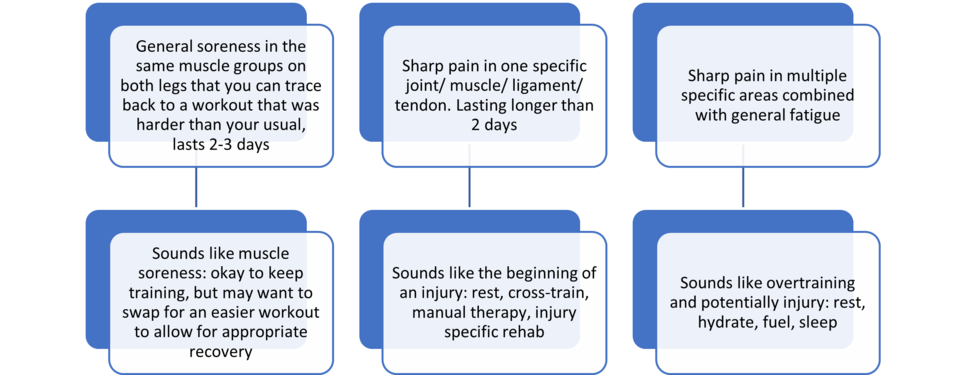Return To Sports - Strategies To Safely Get Back Into Action

Returning to sports after being injured can be tricky. There is a lot of excitement about playing & competing again but also a ton of nerves and uncertainty, especially if a serious injury took you out of play. One of the most challenging aspects of getting back into action is the constant comparison of where you were physically before you were hurt and where you are now. Oftentimes this causes people to jump too quickly into a training routine and leads to frustration, disappointment, and potentially other injuries as they push their bodies to do more than they can handle.
It can take a long time to work through some of the emotions related to returning to sports – we’re sharing some strategies that can make the journey back a little bit more manageable and positive!
Compare your performance to a recent version of yourself
One helpful strategy after being away from your sport is to compare yourself to where you were only a week or two ago, not where you were before you got hurt. This allows you to recognize the progress that has already been made and provides a better representation of your current physical abilities.
It’s also important to remember that the heart adapts more quickly to training demands than the musculoskeletal system does, so it initially feels like you’re further along than you think because your breathing and heart rate are (relatively) under control. This puts your muscles, ligaments, tendons, and bones at increased risk for injury because you may push them further than they can handle, so this is where comparing yourself to a more recent version of yourself and increasing training gradually can be very beneficial.
Make short-term and long-term goals
Having a combo of both short-term and long-term goals is another good way to help navigate the mental traps and negative emotions that you can experience with comparing to your old self. Creating SMART goals (Specific, Measurable, Attainable, Realistic, Time-Bound) helps to build a progression plan instead of seeing your current physical state as permanent. Most often, the short-term goals will relate to general fitness, while the long-term goals will be more sport-specific and related to competition.
The best method is to start with your long-term goals in mind and then create your short-term goals based off those. Ask yourself, “if I want to be able to do X, what do I have to be able to do first to get there?”. Breaking that down multiple times ends up giving you the small steps you need to reach the larger goal.
Consistency over intensity
Another common pitfall is thinking you need to “whip yourself back into shape.” Jumping into intense workouts right away leads to, at the very least, several days of muscle soreness and, at the most, further muscle & tendon injuries. The more helpful approach is to focus on consistency over a long period of time.
Consistency helps to build habits - the more it is a habit, the less motivation is needed to perform the activity. The initial stages of training are all about building a strong base - the more consistently you can get out there (and allow for good recovery), the bigger that base will be.
Listen to your body
This is the most common recommendation for any sport or activity, but also the most ignored. In the early stages, it can be challenging to understand the difference between the normal discomfort of muscle soreness and injury-related pain. On one hand, if you pay attention to every little ache and pain, you may not reach your long-term goals but on the other hand, if you ignore your discomfort, you could be setting yourself up for injury and more time out of action. This is where working with an athletic trainer or physical therapist can help because they will sort through the signals your body is telling you and brainstorm a plan of action.
Here are some general recommendations to guide you:

It’s important to remember that once you’ve identified an injury, there is still a lot you can do to improve your overall fitness and performance. The concept of rest is relative and should be viewed simply as refocusing. There is usually some sort of cross-training, strength-training, or treatments that can be done to improve your recovery time and overall performance.
It’s okay to have a bad day
Everyone, even the pros, have bad days, bad weeks, bad seasons. One bad day is not a representation of your athletic career. Training should be periodic, with planned weeks to rejuvenate and grow stronger. However, sometimes things don’t always go as planned, and that’s okay. Bad days can sometimes be a good opportunity to pause, reflect on any mistakes, and then move on.


